“The overall result is unlike anything I have ever heard from a guitar trio”: On Tripliciti, Andy McKee, Calum Graham, and Trevor Gordon Hall put their fluid fingerstyle chemistry on stunning display
This formidable trio's self-titled debut is the ensemble guitar album of the year – and a watershed acoustic moment
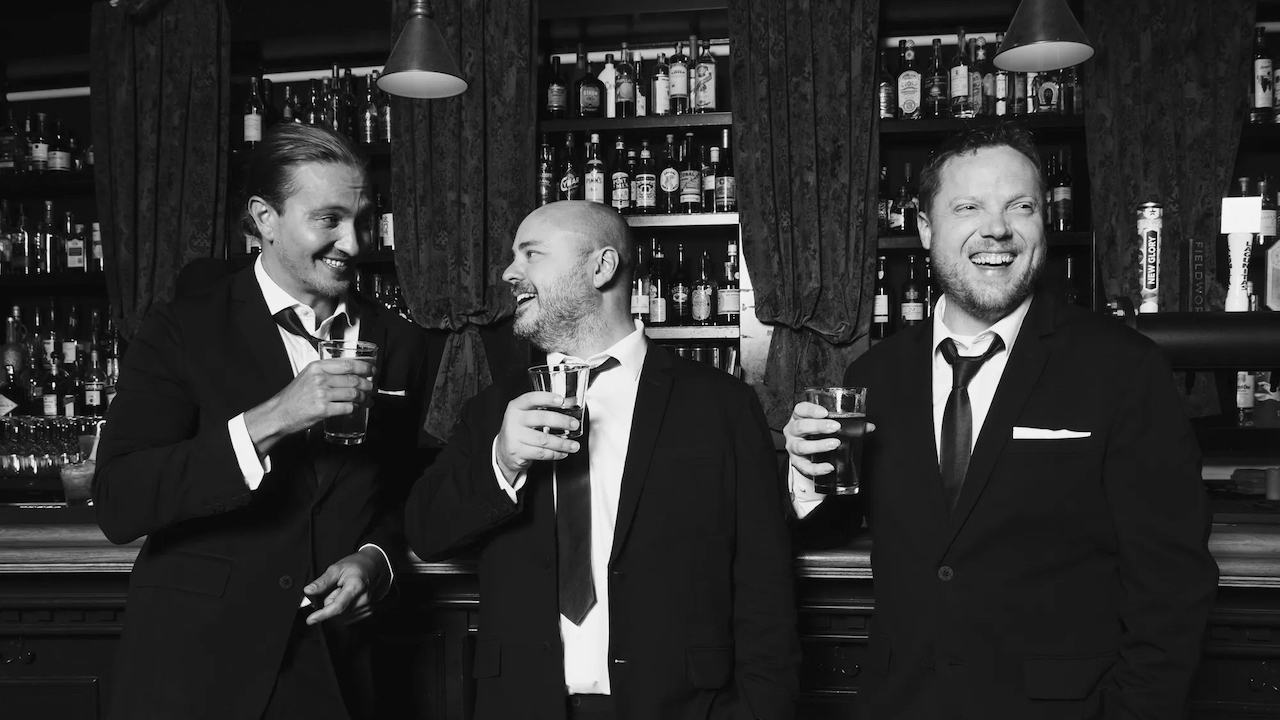
Putting multiple percussive fingerstylists in the same trio could be a three-ring disaster, but not when the ringmaster is the modern master and the others are accomplished disciples eager to serve the greater good. That’s the recipe for Tripliciti, and their self-titled debut is layered with lovely interlocking parts laced with lush ambiance. It’s the ensemble guitar album of the year, and it could represent a watershed acoustic moment, with a tour and more music still to come.
Andy McKee is the headman, a player who, in a lot of ways, is like the acoustic Joe Satriani of this millennium. He’s arguably the most influential player of the era, certainly on solo acoustic and perhaps overall. And, as it turns out, McKee even has a Satch-like flair on the electric, something that’s highlighted on Tripliciti. His playing aside, McKee is eager to educate others on his groundbreaking techniques in forums like his immersive Musicarium camp, and to share the stage with virtuosos on tour when he’s not going it alone.
In addition, McKee spearheads the Guitar Masters tour that regularly features three gurus, like an acoustic version of Satch’s G3. The 2019 lineup included fellow modern fingerstyle monsters Calum Graham and Trevor Gordon Hall, who are now united with McKee in Tripliciti.
It’s safe to say, Tripliciti defies expectations. Sure, they slap and tap their acoustics, but not in the overt fashion that made two-hand percussive fingerstyle so omnipresent with the advent of YouTube and the CandyRat label. The trio have their fireworks, but it’s nothing like the bluegrass-style ripping that’s come to dominate the virtuoso acoustic guitar playing of, say, Billy Strings and Molly Tuttle.
The best thing my ears have heard in a long time
Steve Lukather, on Tripliciti
Instead, Tripliciti is about textural tapestries. Each of the three guitarists takes turns leading on original tunes from their solo repertoire while the other two find complementary parts, often on high- or low-pitched guitars, creating tri-toned sonics almost like a super guitar with extra strings played by a 30-fingered alien. Then there are extra goodies, such as EBow, slide, electric guitar, and ambient effects that take the affair to otherworldly destinations.
Guitar legends of all stripes are already raving about Tripliciti. Tommy Emmanuel describes the group as “Relaxed, yet intense and worldly. Brave yet simple.” John Petrucci calls them “just phenomenal,” while Steve Lukather sums the trio up as the “best thing my ears have heard in a long time!”
So what do McKee, Graham, and Hall have to say about all this? Guitar Player caught up with them to find out.
All the latest guitar news, interviews, lessons, reviews, deals and more, direct to your inbox!
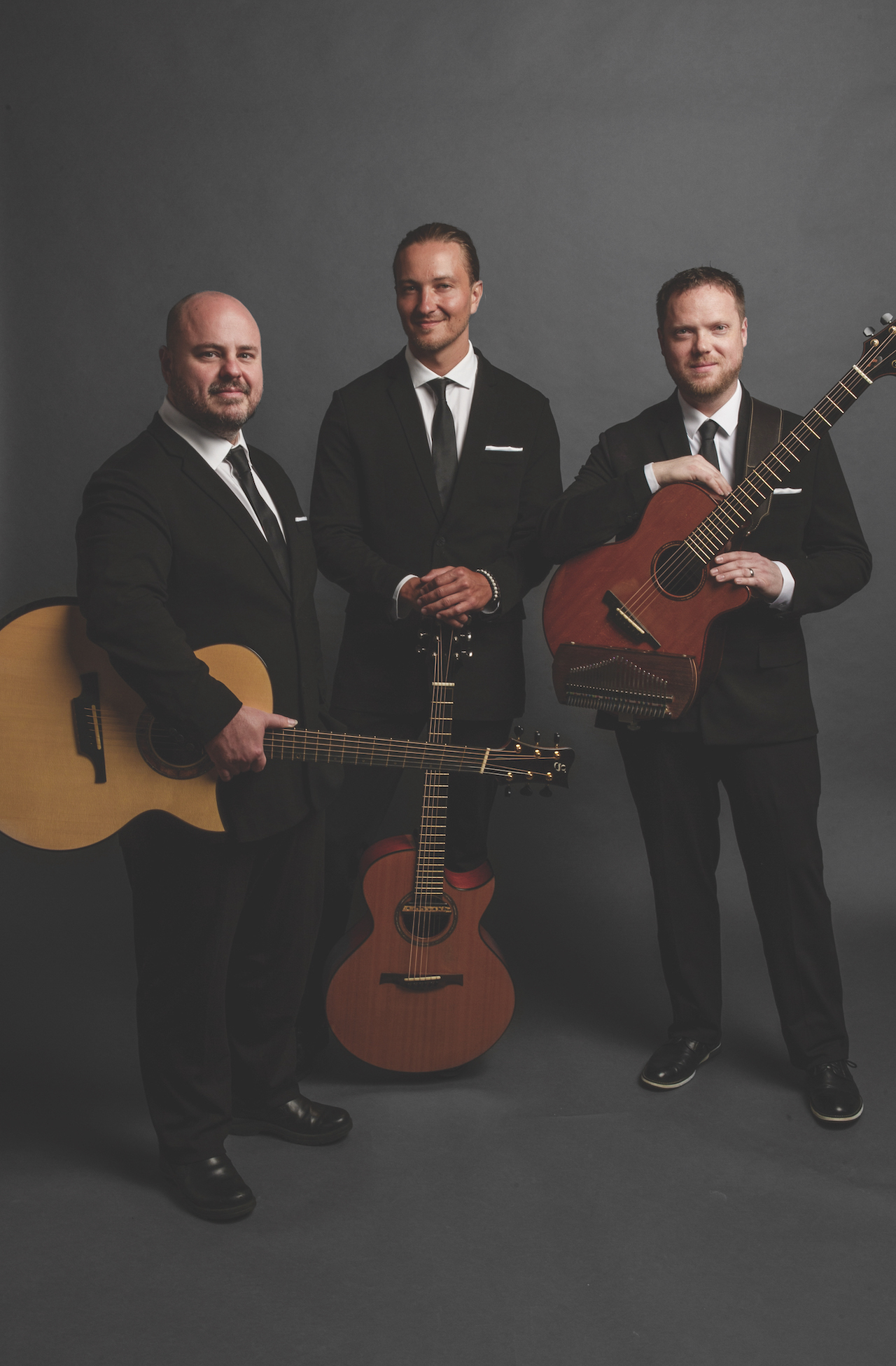
What’s the origin of Tripliciti?
Andy McKee: “We all met at a festival in Pennsylvania years ago and became fast friends as we share a similar sense of humor and an appreciation for the depth of fingerstyle guitar playing. We all love the craft of creating music that is relatable and non-vocal in nature.”
Trevor Gordon Hall: “It was summer of 2012. I knew Calum from competing at the Canadian Guitar Festival and Fingerstyle Competition, and we were both huge fans of Andy. The festival in Philadelphia got rained out, so we went out to grab food and quickly became friends. We toured together in 2019 for a string of Guitar Masters dates.
“It’s a cool tour that was started by Andy and Eric Johnson and has been all over the world. The format is three players; each plays a solo set, and then collaboration. Each person would bring an original for the others to add parts, and that’s what we did here as well. Chemistry sparked, and as we kept adding more songs the realization came that it was time to make a record together.”

Calum Graham: “There is a very natural synergy with our friendship, philosophy, and mindset. Since the personal nature of the acoustic guitar lends itself to being more of a solo endeavor, we thought it would be unique to try something different with the three of us collaborating and orchestrating music on various types of guitars.”
What was the vision going into the studio?
McKee: “We all wanted to capture something that let each of us express ourselves as individuals, yet maintained an illusion of being almost one instrument. There are times when the recordings almost sound like one giant guitar consisting of a baritone, a high-strung guitar, and a standard-pitch guitar, all at once.”
Hall: “I remember feeling this would be an extremely ambitious task to track in a way that doesn’t get muddy or cluttered. It always worked like magic live onstage, but putting that on record was going to require some real expertise. I spent considerable time leading up to the sessions talking with our Grammy-winning audio genius, Corin Nelsen, about how to prepare for the recording process.
“Some pieces, like Andy’s Hunter’s Moon, already have him doing a lot of epic multitasking, and circumstances like that forced us into many fun situations finding how to support the piece without getting in the way. Fingerstyle is mostly known to be a solo tradition, but it was fun to expand the possibilities by making a huge collective sound, as well as exploring how delicate and intimate we could be together.”
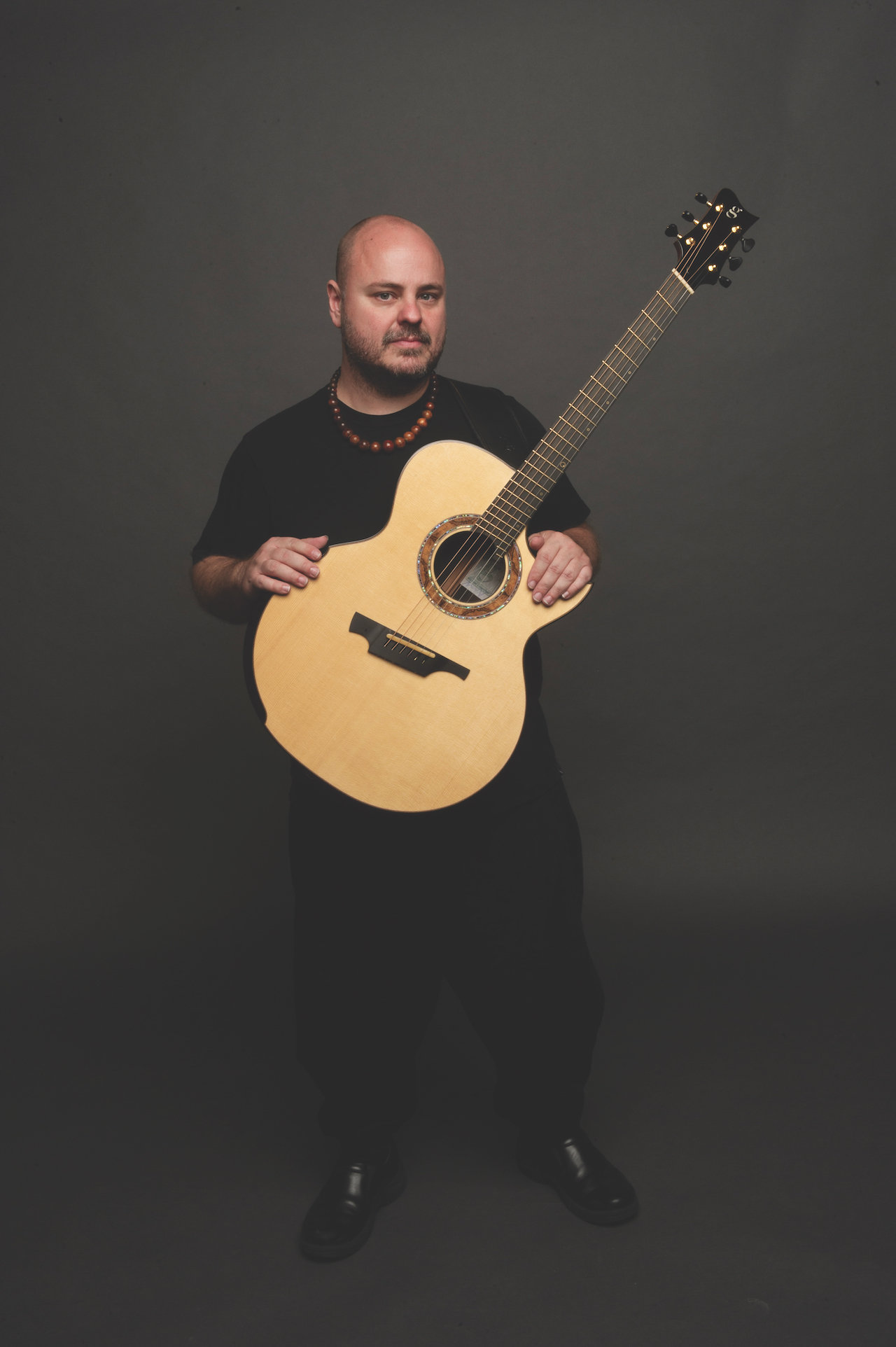
How did the sessions go down?
McKee: “We were in a cool studio in a refurbished barn in Connecticut. The original composer would lay down the tune, and then the others would record accompaniments individually. Most parts were worked out ahead of time, but we came up with a few in the studio.”
Graham: “We tracked everything over the span of a week at Maple Hill Farms. Just being in that space was inspirational. Corin converted that old horse barn into a studio, so he truly knew how to get the best sound there.”
Hall: “I had recorded in the barn with Corin a few years prior and fell in love with the place. I did some production behind the desk along with Corin, as I love being involved in both sides of the process. Every song was its own world to explore. We laughed a lot as it came together, and we listened through mixes with an occasional tear or two.”
Are there certain strengths that each player brings?
McKee: “Trevor is great at writing melody. He uses a term called ‘chasing the chills,’ trying to create stuff with real feeling and emotion. Calum is like the John Paul Jones of the group. He comes up with so many cool parts and uses different instruments and tools like the EBow.”

Hall: “Not noodling is a unified strength. Sometimes we do noodle around to find parts, but we all naturally settle for ideas that enhance the piece rather than jumping in to steal the spotlight with technical gymnastics. The fact that each player is well represented on the record is because of our unified desire to make the whole sound complete. I was amazed yet again at Andy’s timing, which was so strong and clear to hear because we never used a click track.
It was refreshing to be able to orchestrate these songs with multiple voices on multiple instruments. The overall result is unlike anything I have ever heard from a guitar trio
Calum Graham
“Calum’s sense of space and knowing exactly what and when to play was another reminder of why he is such a tasteful, melodic player. His EBow parts put us all into moments of trance. I enjoyed finding spaces to enhance the harmony of a chord or accent a melody, or even drive the percussion parts louder for more power.”
Graham: “It was refreshing to be able to orchestrate these songs with multiple voices on multiple instruments. The overall result is unlike anything I have ever heard from a guitar trio.
“I played a nylon-string guitar on Journey of Love, and I used the EBow to add ambient, ethereal textures where Andy’s and Trevor’s parts felt full. The biggest thing I learned in working on this album was to listen deeply to what is happening and know when to do what: harmonize, add a new part, create a texture, and when to not play. It’s all about recognizing the many musical moments that happen in a composition and trying to be mindful in making decisions about contributions that best serve the song.”
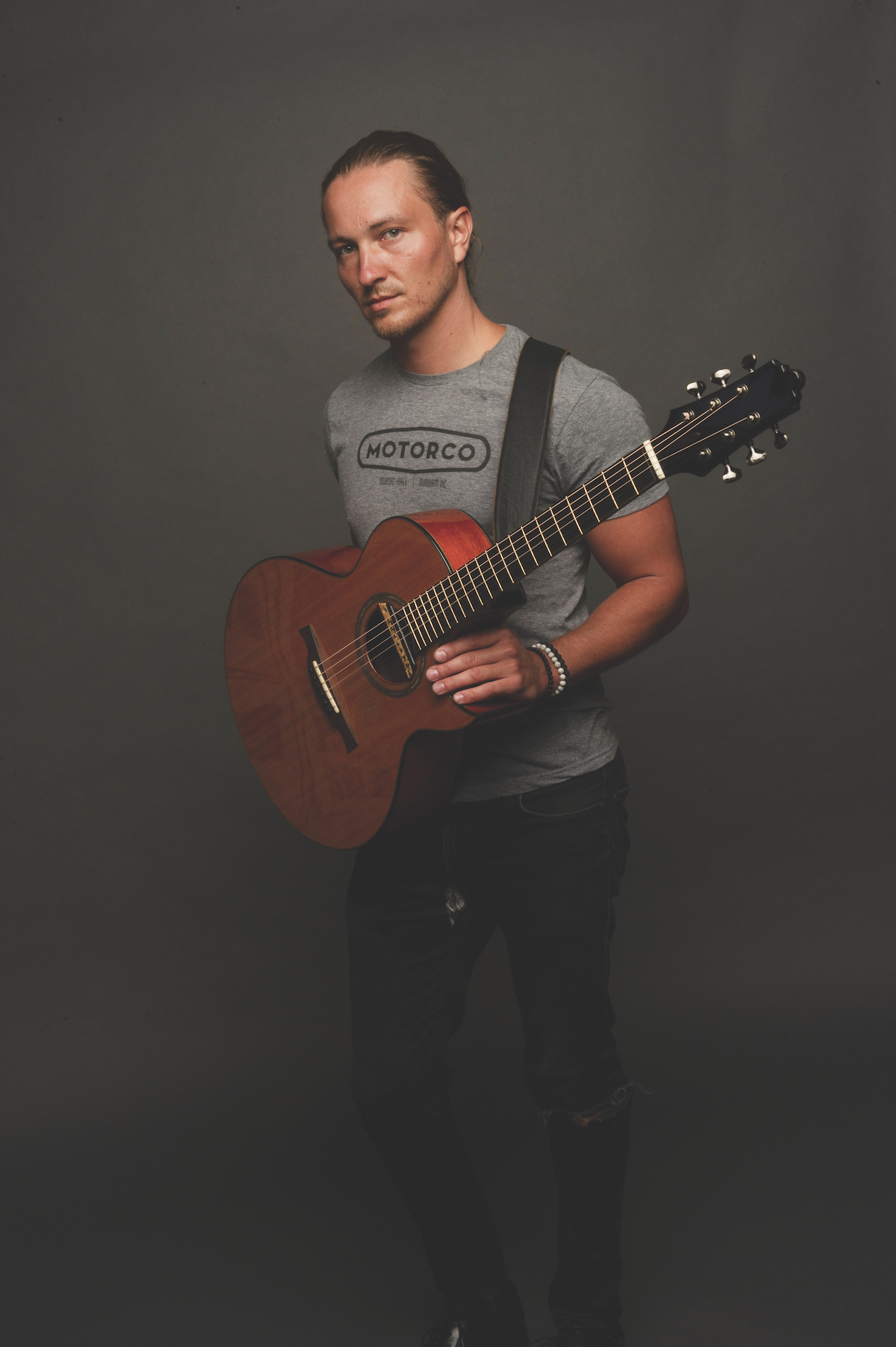
“Most people don’t know that Andy can also tear it up on the electric guitar. It was great to have him featured on two of the tracks with incredible melodic solos to expand the sonic palette of the album along with Trevor’s Kalimbatar and high-strung guitar, which added some gorgeous colors.”
What are your primary instruments on Tripliciti?
McKee: “I played my signature model Greenfield and a baritone made by Canadian luthier Michael Greenfield as well. My electric is an Ernie Ball Music Man John Petrucci Signature Majesty six-string, which I used on In Lak Ech and That Old Familiar Pain.”
Hall: “I mostly used my main guitar, which is a Kalimbatar built by Canadian luthier Sheldon Schwartz. It’s a steel-string equipped with a custom kalimba finger piano that can attach or detach whenever needed. I also used a high-pitched guitar made by Pennsylvania luthier Mike Haney, and that was a lot of fun to add to the mixes. It is featured on The Blue Hour and Memento Vivere.
“I adore the sound of the high-pitched guitar combined with a standard steel-string plus a baritone, because it’s like a massive 18-string guitar with the sound expanded both higher and lower.”

Graham: “I played a mahogany/cedar small jumbo acoustic steel-string guitar as well as a rosewood/spruce baritone built by [Canadian luthier] Mario Beauregard. On Journey of Love I played three EBow parts: One on my steel-string, another on Trevor’s Furch nylon-string guitar, and another on Andy’s electric. The combination of all our instruments expands the tonal palette, giving each composition a unique texture.”
Can you provide some insights on the first single, In Lak Ech?
Graham: “I wrote this song for my dear friend Danny Choi when he lost his father. The parts that Andy and Trevor added are sublime. I love how Trevor chose to use the slide throughout this piece. It adds so much and is an unexpectedly beautiful sonic addition to the album. Andy’s solo at the end is so melodic, tasteful, and killer!”
McKee: “The way Calum is strumming about two-thirds of the way into the song brings the energy level up, and I felt like it needed an electric guitar solo there. That’s the way I was hearing it in my head.”
Hall: “Andy’s electric lead guitar adds an extra level of excitement because he absolutely nails it! I contributed slide guitar to achieve a weeping vocal quality, along with kalimba and my standard steel-string guitar. During the album’s post-production, we spent time experimenting with different reverbs to capture the essence of this piece. It holds a great deal of emotional weight.”
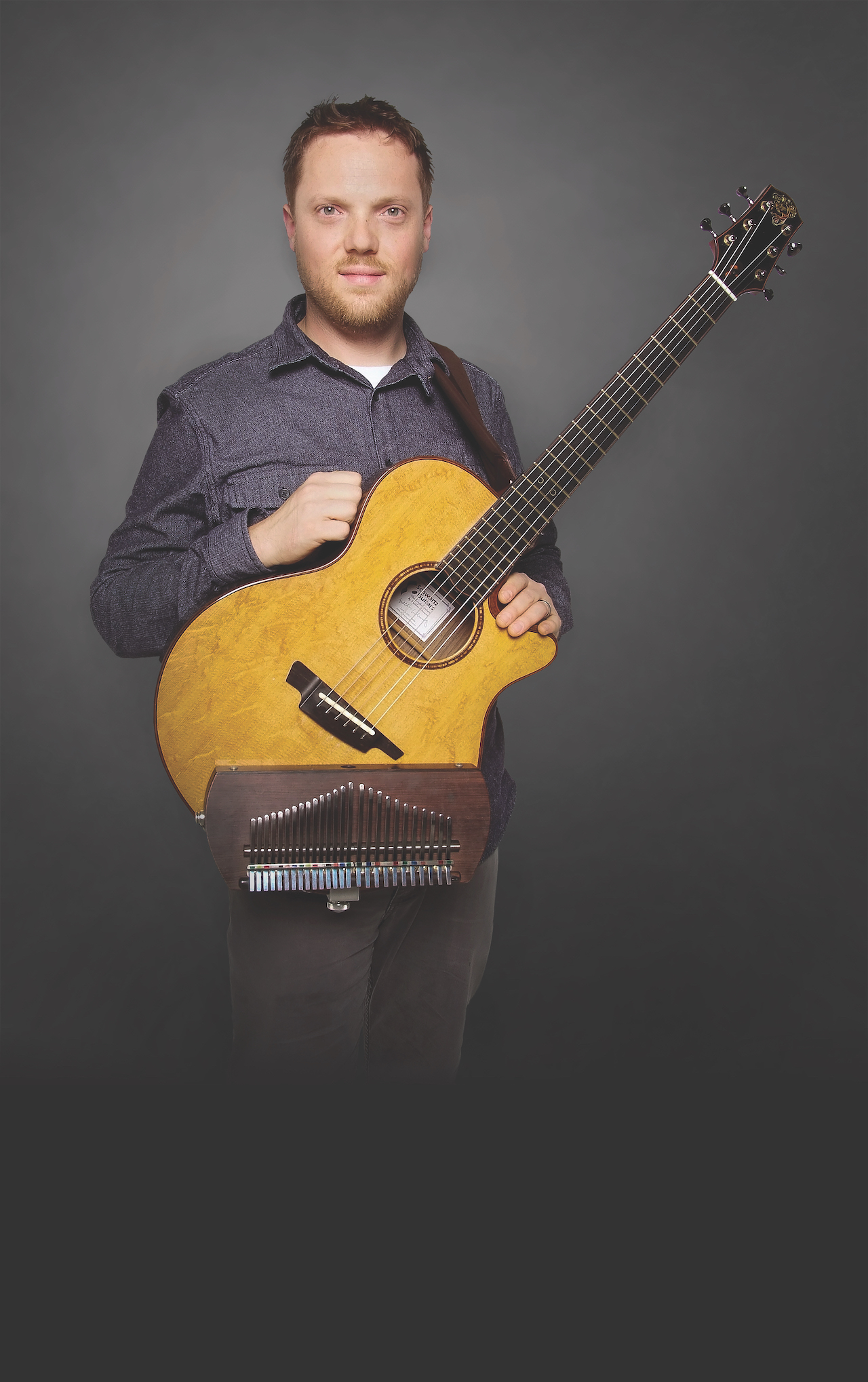
How did you all approach For My Father?
McKee: “My dad gave me my first guitar when I was 13 years old. He passed away in 2005 from cancer, but I was able to perform this piece for him before he died. I didn’t change anything about the arrangement or my part for this version. I used the signature Greenfield, tuned, from low to high, E C D G A D. There’s a capo on the third fret.
“I’ve played it as a duo with Calum and Trevor individually, and they both came up with great parts. Incredibly, the three parts blended as a trio. The trio version is so powerful, it’s almost difficult to get through without feeling overwhelmed.”
As we kept adding more songs, the realization came that it was time to make a record together
Trevor Gordon Hall
Hall: “This piece has always held a special place in my heart. It has become a staple in the standard fingerstyle guitar repertoire, and its meticulous attention to detail make it a perfect composition. It was the very first composition we played together as a trio, and I believe it truly solidified the uniqueness of our chemistry as a group.”
Graham: “Every song on the album is special, but every time we play For My Father, it feels like something sacred.”
How did another popular McKee tune, Hunter’s Moon, get the Tripliciti treatment?
McKee: “The arrangement is the same as my solo version on Joyland [2010]. Some fingerstyle pieces are mellow and chill, and I wanted to write one that wasn’t. I wanted higher energy, more inspired by Pantera than Pat Metheny, I guess. The tuning is [low to high] C G D F Bb D. Dynamically speaking, we wanted an ebb and flow, so we bring down the energy a bit when the third A section comes around, and then we explode on the fourth time through.”

Graham: “I play baritone guitar in standard tuning. Their two acoustic parts already sounded quite full, so I decided the EBow would make a nice addition in the verses to have a call-and-response part with Andy’s melody. In the bridge where Andy and Trevor are both strumming, I felt like a solo would be the right fit. I’m usually too shy to do a guitar solo, but in the spirit of Larry the Enticer I thought, ‘I’m just gonna send it!’” [laughs]
Hall: “When we perform Hunter’s Moon live, it feels like a full-on rock-band experience. There are multiple layers of instrumentation, all working together to support Andy’s vision and the overall arc of the song. This piece packs a powerful kick, which is a direction I am eager to explore further. I particularly appreciate the contrast between For My Father and Hunter’s Moon, as it showcases the dynamic range we enjoy exploring as a group.”
How about the lovely textures that make up The Blue Hour?
Hall: “I originally wrote this piece after playing a unique guitar that was made for Sting [a Mike Haney high-strung 12-fret 00]. It had high-pitched strings, and as I played a few chords, something sparked. Basically, it’s like buying a 12-string guitar pack and only putting the octave strings on.”

McKee: “I’m mostly playing harmony along with Trevor on my signature Greenfield in standard tuning.”
Graham: “I’m playing the baritone on this one in standard tuning with a capo on the first fret. I thought adding a harmony part to Trevor’s melody would work well in this piece.”
Hall: “I was so excited to hear how fresh this sounded. A trio of guitars, all in drastically different pitches – I had not heard anything like it before. It was very dear to my heart as a solo piece, but now, after hearing it with the guys, it’s impossible to play it solo anymore. I keep looking around for the other parts the guys bring and start to really miss them! This piece feels like the true essence of our group sound, and I can’t wait to explore more.”
How did the lone new composition, Memento Vivere, come together?
Hall: “As we first embarked on our collaboration, I began to contemplate our sound and the possibilities of exploring new compositional territories. I composed this piece on the high-strung guitar, envisioning how Andy and Calum would complement and expand upon it, and they absolutely nailed it.”

Graham: “I’m playing the baritone guitar in standard tuning to counter Trevor’s high-strung part. I thought it would give his part some weight to fill in the low end and to also create a moving, complementary voice in that range. I love how this song evolved and blossomed into being three-dimensional.”
McKee: “It has a way of enchanting you. It’s more like a spell than a piece of music. I am playing the standard pitch guitar, and I play the lead guitar solo. I wanted it to feel more like a vocal melody, not too fast or flashy.”
Hall: “This marks a bold step into the new path of writing original songs for Tripliciti. We are currently writing the next record with all new material, but first we thought it would be fun to return to the Guitar Masters tour and present a record to everyone based on our previous tour experiences.”
So you’re already working on new material and preparing a tour?
McKee: “Yes. We take baritones, high-strung guitars, standard acoustic, and electric guitars whenever we do a show. You get everything that’s on the record. I always thought that playing acoustic guitar without a pick was going to be only me on the stage, but it’s been fun to play with two like-minded fingerstyle guitar players. I feel like this album is full of rich, beautiful stories without a single word being spoken.”
- Tripliciti is available to purchase or stream now.
Jimmy Leslie is the former editor of Gig magazine and has more than 20 years of experience writing stories and coordinating GP Presents events for Guitar Player including the past decade acting as Frets acoustic editor. He’s worked with myriad guitar greats spanning generations and styles including Carlos Santana, Jack White, Samantha Fish, Leo Kottke, Tommy Emmanuel, Kaki King and Julian Lage. Jimmy has a side hustle serving as soundtrack sensei at the cruising lifestyle publication Latitudes and Attitudes. See Leslie’s many Guitar Player- and Frets-related videos on his YouTube channel, dig his Allman Brothers tribute at allmondbrothers.com, and check out his acoustic/electric modern classic rock artistry at at spirithustler.com. Visit the hub of his many adventures at jimmyleslie.com
